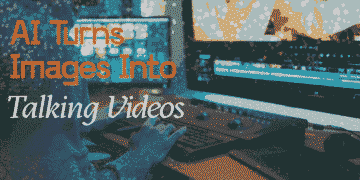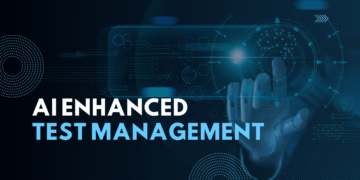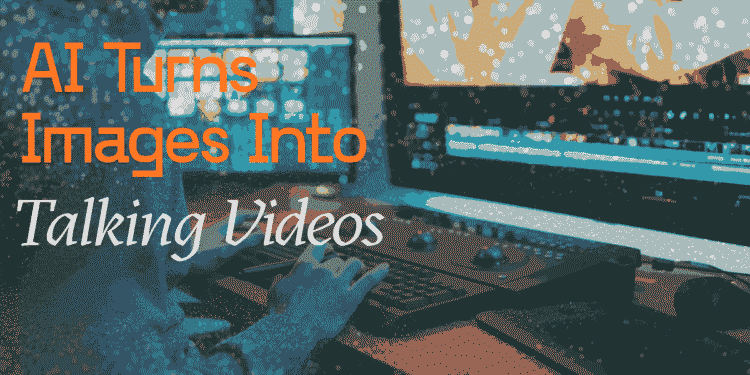Artificial intelligence is moving faster than most people imagined, and one of its most exciting shifts is the rise of tools that can turn a simple picture into a talking video. Editing is now possible with a single portrait and a smart AI engine. Creators, educators, marketers, and even everyday users are discovering how powerful and accessible this transformation has become.
In the past, people relied on traditional animation techniques or editing software that took time and skill to master. You can upload an image and convert it into a lifelike video in seconds. This breakthrough is reshaping content creation because image to video AI is giving people a faster and easier way to produce professional-looking visuals without any advanced experience or equipment.
The Shift Toward AI-Driven Visual Storytelling
Artificial intelligence is not just assisting content creation anymore. It is taking a leading role. One picture can now be transformed into a moving scene where the face blinks, talks, and reacts naturally. This new direction is opening doors for brands, influencers, and businesses who want to communicate visually but do not have large production budgets.
The biggest change is accessibility. A process that used to cost thousands is now available to any user with an internet connection. This is why more people are experimenting with these tools every day. They are discovering that making a talking video is no longer a high-end task. It has become a standard creative option across social platforms, ecommerce, education, and entertainment.
How AI Brings Images To Life
The secret behind this transformation lies in deep learning. The system studies thousands of real human expressions and learns how muscles move, how lips form words, and how eyes shift naturally. When you upload a static picture, the AI analyzes the face structure and maps possible expressions onto it.
From there, it predicts motion frame by frame. The image starts talking, blinking, and moving its head as if it were recorded on camera. These actions do not look robotic because the system understands natural human patterns and replicates them with surprising accuracy.
Read Also: Isotonix Lawsuit Explained: Legal Issues FDA Warnings
The Future Of Digital Communication
What makes this technology so important is its potential to change how we communicate online. Instead of sending plain images or text, people are now sending expressive video messages created from their photos. Businesses are using avatars to greet customers, teachers are creating more engaging lessons, and social media users are gaining new ways to express themselves.
The Role Of Personalization
One of the strongest advantages of this innovation is personalization. Instead of using generic avatars, people prefer videos created from their own images. It allows content to feel closer, more relatable, and more emotional. This approach is especially powerful for customer care, product explanations, and personal branding.
When these tools combine facial animation with audio input, the visuals feel fully synchronized. This is where voice control and emotional expressions become essential because the viewer feels like they are watching a real moment rather than a computer-generated clip.
Understanding The Importance Of Authentic Motion
Realistic motion has become a priority. Users want their AI-generated videos to look natural and organic. This is why modern systems focus heavily on facial accuracy. They track tiny muscle movements, eye reflections, and subtle changes in expression that make a face feel alive on screen.
This attention to detail also supports professional uses. Training videos, marketing clips, tutorials, and presentations appear more polished when the digital face looks sincere and fluid rather than robotic.
Emotional Delivery
Emotion is the biggest driver of engagement. Viewers connect better when a face on screen shows meaning behind the words. AI-generated talking videos allow creators to express tone, mood, and personality without stepping in front of the camera. It becomes a tool for storytelling and communication rather than simply a visual trick.
As this technology grows more advanced, creators will rely on it for deeper emotional delivery in all kinds of content. It will become a powerful support for digital identity and brand messaging.
The Next Big Evolution
The industry is now moving toward smarter systems that can change backgrounds, adjust lighting, and adapt expressions to match different tones. These improvements are giving users more control and creative depth than ever before.
As we approach the next phase, AI tools will not just animate faces; they will build entire scenes around them. This direction is expected to reshape short videos, marketing campaigns, and even virtual assistants.
In many advanced tools today, this evolution is enhanced with smooth Lip Sync features that match speech naturally and make the output look far more realistic. These enhancements are pushing talking images toward cinematic levels of quality.
Conclusion
A new era of visual expression has arrived. Artificial intelligence is changing the way we think about content, and the ability to transform simple images into moving, talking videos is one of the clearest examples of this progress. What once required complex skill and equipment is now a simple creative option available to everyone. From marketing to entertainment and everyday communication, this shift is giving people the power to turn static visuals into dynamic stories that feel more human, more expressive, and more immediate.
Read Also: ETSGamevent by eTrueSports: The Ultimate eSports Experience in 2025









































